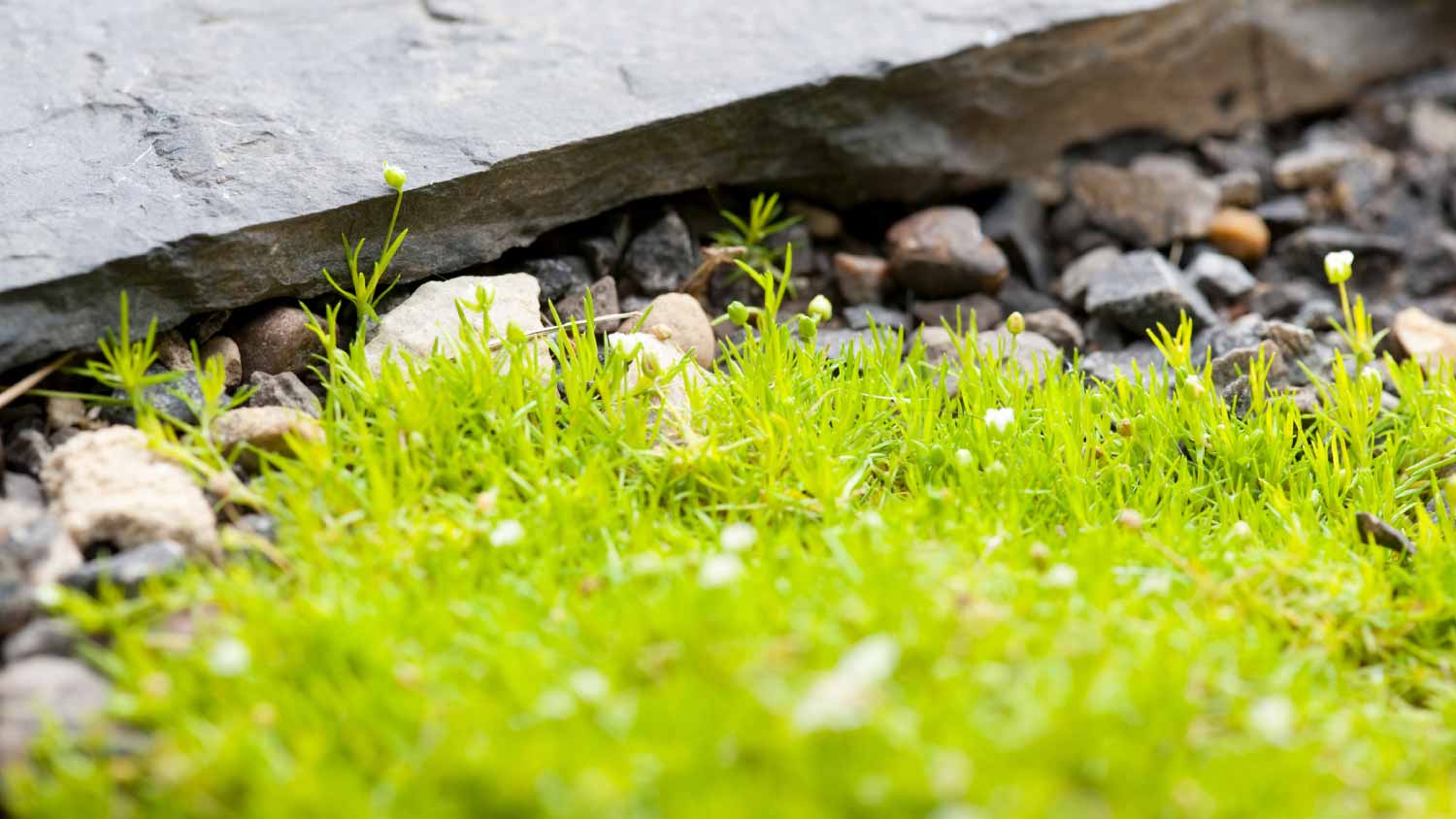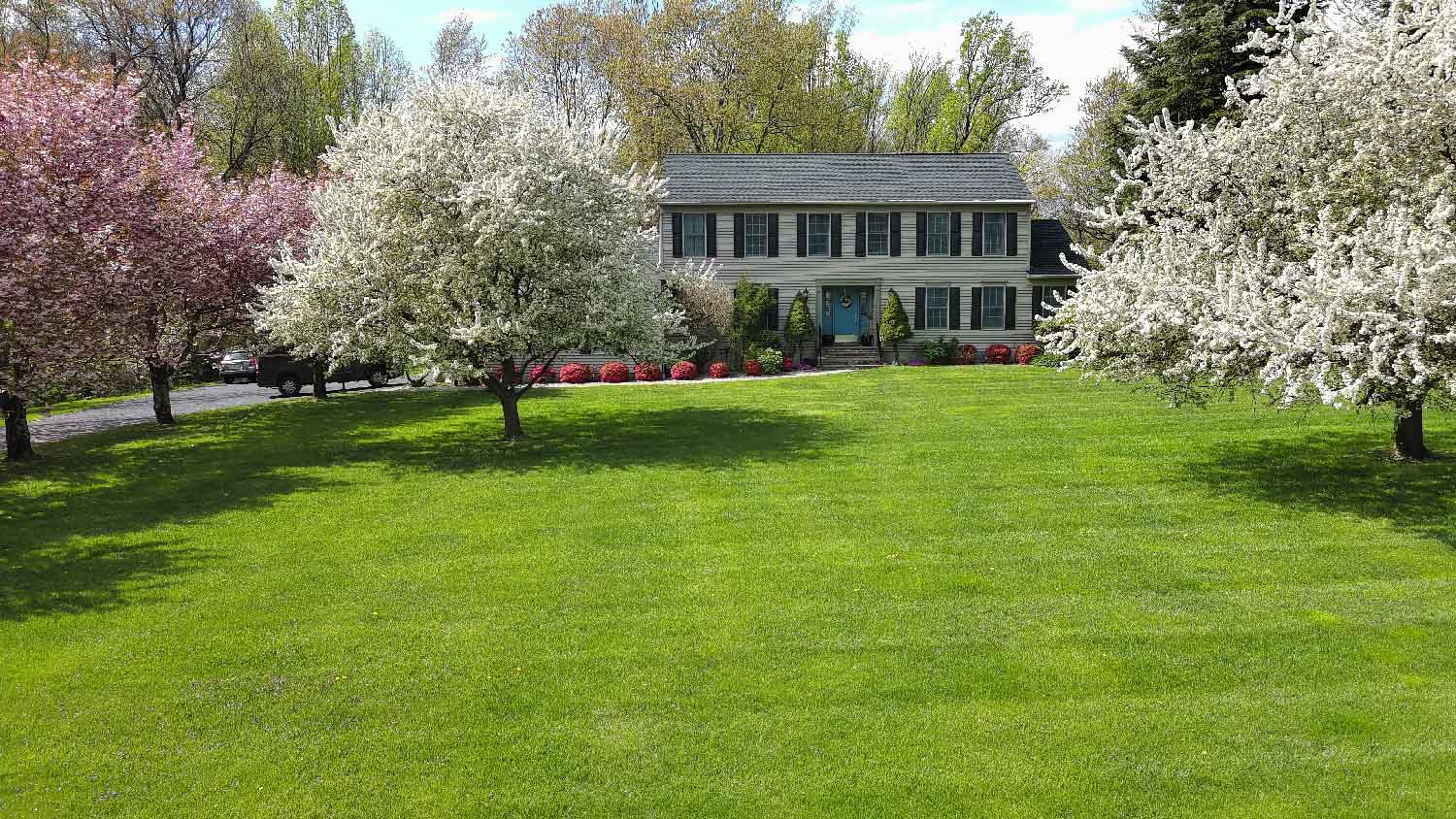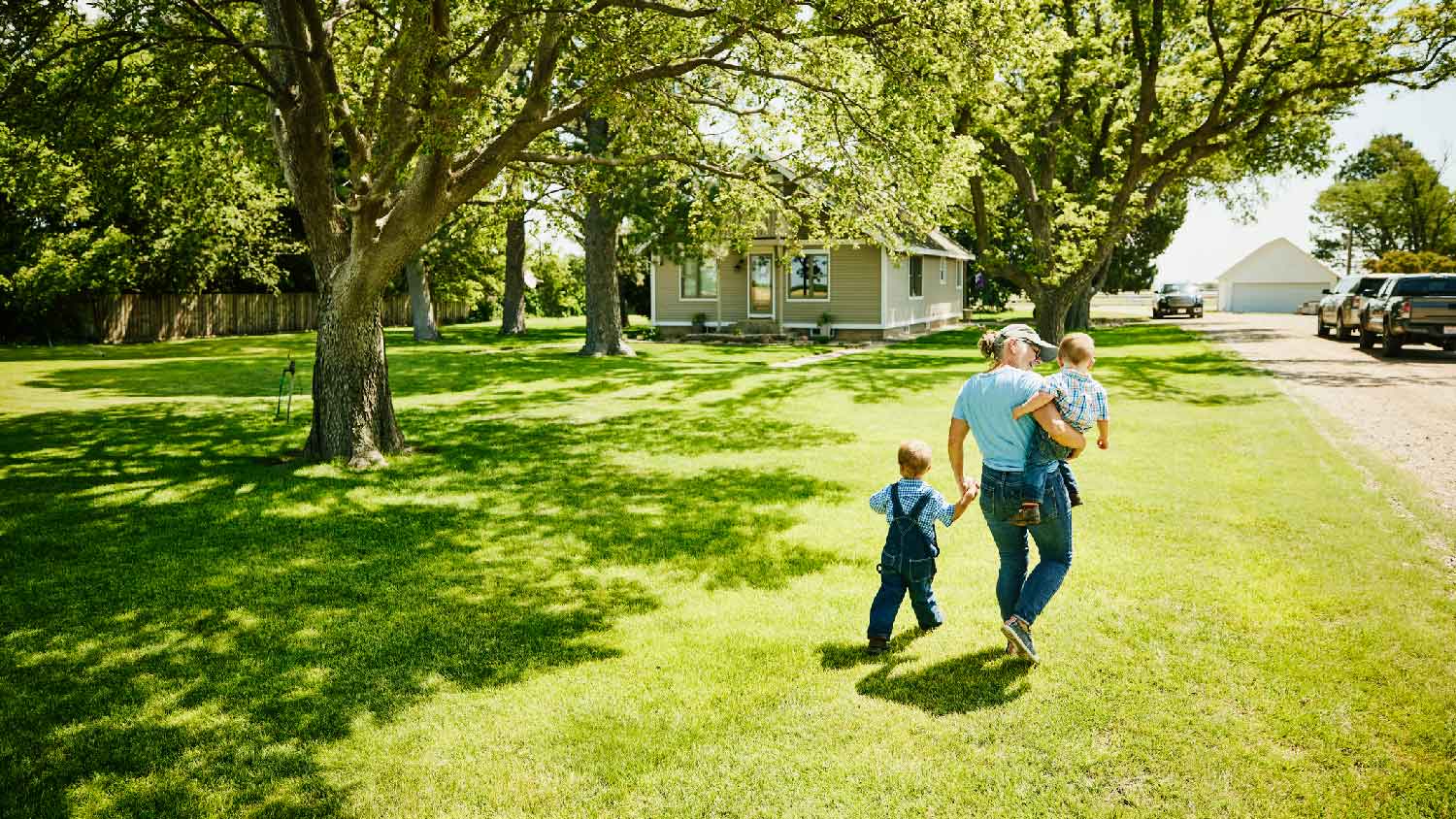How to Dethatch a Lawn: A Step-by-Step Guide
Follow these steps to dethatching your lawn by yourself


What do you do if you catch some thatch in your lawn? Learn how to dethatch your lawn, of course!
Thatch is a mix of living and dead organic plant matter that accumulates on lawns. It mostly consists of roots, crowns, and other plant parts. While thatch is natural, it hinders your lawn's vitality by preventing water, oxygen, and fertilizer from reaching grass roots. Thankfully, you can dethatch your lawn to let nourishment reach the grass roots again.
Why Do I Have to Dethatch My Lawn?
Dethatching can protect the health of your lawn. Many people first discover that their lawns need dethatching after noticing yellow or brown patches of grass. Thickened thatch can ultimately suffocate your lawn until all of your grass dies.
Since thatch consists partially of dead plant matter, it's a big risk factor for lawn pests, disease, fungi, mushroom overgrowth, and pest infestations.
Some lawns are more vulnerable to the impact of thatch than others. If your lawn consists of Kentucky bluegrass, Bermuda grass, and some creeping varieties, you may need to consider dethatching soon.
How Much Does It Cost to Dethatch Your Lawn?
When having your lawn professionally dethatched, expect to pay roughly $175 per hour. Lawn professionals use a thatching machine with special blades that cut grass in a criss-cross motion.
If you prefer to use power raking, professionals typically charge around $10 to $20 per 1,000 square feet of grass. That means paying around $100 to $200 for a yard that's about 10,000 square feet.
What if you want to dethatch your own yard? The cost to rent a mowing machine for dethatching is between $40 and $90 per day after putting down a $150 deposit.
How to Prepare to Dethatch Your Lawn
Begin by double-checking that your lawn even needs to be dethatched, or if simple aeration will do the trick this season. Thatch is not inherently evil—up to half an inch of it on our lawns is quite normal.
This organic layer made of old grass clippings, stems, and roots acts as a permeable barrier between the soil and your grass blades to manage the flow of air, water, and nutrients. But an imbalance of moisture, fertilizer, or the microorganisms that eat the thatch can lead to its overgrowth.
Dethatching your lawn doesn't require a ton of preparation. However, it is important to avoid fertilizing before dethatching. You can also prepare your lawn by cutting it to about half its normal height before getting started.
How to Dethatch Your Lawn
It's dethatching day! Before getting started, make sure you're scheduling your dethatching during an ideal time. If you're dethatching a cool-season grass, it's ideal to dethatch during early spring or early fall to ensure that the soil is slightly moist. If you're dethatching a warm-season grass, late spring and early summer are ideal.
1. Moisten Your Lawn
A slightly moist lawn is preferred, so start by misting your lawn the day prior to dethatching. Alternatively, you can plan your project for one day after a light rain.
If your lawn is drenched from heavy rains, you might want to wait for conditions to dry out before proceeding. Excess moisture can cause dethatching tools to pull up clumps of your lawn.
2. Mow Your Lawn

As mentioned earlier, you should mow an unfertilized lawn to about half its normal height before your dethatching session.
3. Mark Utility Lines
Like any project that involves digging or unearthing in your yard, dethatching requires you to have an awareness of utility lines. Using flags, mark any buried utility lines, sprinkler heads, or shallow irrigation lines within your property boundaries. Call Dig Safe if you have questions about utilities on your property.
4. Make Sure You Know How to Use Your Equipment
If you're renting dethatching equipment, ask the rental company to explain how to use every piece correctly to avoid injuries and damage to yourself, helpers, and your lawn. Here's a quick rundown of how the three common dethatching tool options work:
Rake: A standard dethatching rake works similarly to a standard yard rake. Featuring short tines paired with thin blades, these rakes can tear into your lawn to pull up dense layers of thatch. It’s a reasonable option for a smaller yard. However, the amount of effort required with a standard dethatching rake makes this option unrealistic for larger yards.
Power Rake: An electrified dethatching rake uses rotating tines instead of blades to dig and lift with every push. Power rakes are a great option for small to medium-sized yards.
Vertical Mower: It might be wise to skip straight to the vertical mower if your lawn has meaty, thickset thatch. Dethatching mowers have vertical blades that are able to quickly and effectively penetrate thatch layers and soil to lift out thickened thatch and roots.
If you're renting a dethatching mower, ask the rental provider to adjust the settings for the appropriate spacing and cutting depth before you take it home. A high-quality rental company should be able to adjust the blades based on the cutting depth required for the grass species in your yard.
5. Start Dethatching

The mechanics of dethatching will vary depending on which method you choose. If opting to use a simple rake, work the rake across your lawn using the same pattern and motion you'd use when raking leaves.
If you're using a power rake, push it back and forth across your yard. The rake will do most of the work of lifting and dumping thatch on top of the grass for you.
When using the mowing method, be sure to follow all instructions provided by the equipment rental company. We recommend that you use a criss-cross pattern to cover your entire lawn. Most areas will require one to two passes at varying angles.
6. Clean Up the Debris From Your Yard
It's important to prepare for the level of debris left behind after dethatching. Your lawn is going to look shockingly ragged. Here are your options for disposing of thatch that has been lifted from your yard:
Compost it for your garden: Use the debris as compost to provide nutrients for your garden. However, avoid this option if your lawn has been chemically treated.
Bag it: Research and follow local guidelines for waste pickup.
If you don't feel like using a wheelbarrow to transport an entire lawn's worth of debris, you can call a hauling company for help.
7. Water Your Lawn
Once you remove the debris from dethatching, it's time to revive your yard by watering it thoroughly.
If you made any bare spots during the dethatching process, you can apply a patching product to restore coverage. You can also consider reseeding your lawn if you notice sizable patches of yellowing or dead grass.
8. Fertilizer and Water Again
Feeding your grass immediately after dethatching is also a good idea. If you were planning to use lawn fertilizer, now is the time to apply it.
Once you fertilize your newly dethatched grass, you should water the lawn one more time to give a final recovery treatment after all of the digging and ripping.
DIY vs. Hire a Pro
Dethatching is a time-intense project that could require you to dedicate two to three days to outdoor labor. If you’re physically up to the challenge and have the right tools, this is a reasonable DIY project.
However, it’s wise to hire a local lawn care service to perform this task for you. One benefit of bringing in a lawn or landscaping professional is that they can diagnose underlying causes for your lawn's thatching issue. In some cases, drainage or landscaping options can help to keep your grass nourished.
How to Prevent Excessive Thatching in Your Yard
The best way to prevent your yard from thick thatching is to perform dethatching once every one to three years. Follow these additional tips for healthy yard growth.
If seeding your lawn, avoid grass varieties known to be rugged, vigorous growers. You should also pay attention to soil conditions. For example, applying nitrogen to soil can increase your odds for thick, fibrous thatching.
Don’t let your soil get compact. If your soil is compacted, it can lead to shallow root growth that contributes to thatching.
Inspect your yard for pooling or stagnant water in your yard after rainstorms. It’s a sign of compacted soil that might benefit from aeration to improve drainage.
Avoid the use of pesticides, insecticides, and fungicides to reduce thatching. In addition to killing unwanted elements in your yards, these treatments can also kill earthworms and other organisms that help with aeration.
Frequently Asked Questions
Most lawns can benefit from dethatching every one to three years. If your lawn consists of grass with a dense, fibrous quality, you may need to dethatch annually.
If you don't dethatch a thatched yard, your grass roots may eventually suffocate under an accumulation of debris. Thatched yards are also more prone to lawn diseases, drought problems, pest infestations, and other common lawn problems.
Yes, it's common for lawns to look bare after dethatching. Dethatching brings soil to the surface to create a "bald" look on your lawn. While you may choose to patch or reseed your lawn if bare patches seem excessive, it's normal for a lawn to look bare after dethatching. With the layer of debris that was blocking water, nutrients, and air from reaching your grass now gone, your lawn is likely to grow better than ever.
Fertilizing is optional after dethatching. However, the period immediately after dethatching is generally considered the best time to fertilize your lawn because the thick debris is now gone. As a result, applying water and fertilizer as the final steps of dethatching can help to spur incredible growth.





- What Are the Pros and Cons of Dethatching Your Lawn?
- Aerator vs. Dethatcher: Which Is Better for Your Lawn?
- Should You Dethatch or Aerate First? Here’s What Your Lawn Needs Most
- 9 Fall Lawn Care Tips for a Healthy, Thriving Yard
- How To Make Grass Green: Become the Envy of the Neighborhood
- 12 Mistakes That Are Killing Your Lawn
- Do I Need to Aerate My Lawn for Healthy Grass?
- Can You Overwater Grass? How to Avoid This Common Mistake
- Why Is My Grass Turning Yellow? 15 Solutions to Try
- 10 Signs of Overwatered Grass (and What to Do About It)










